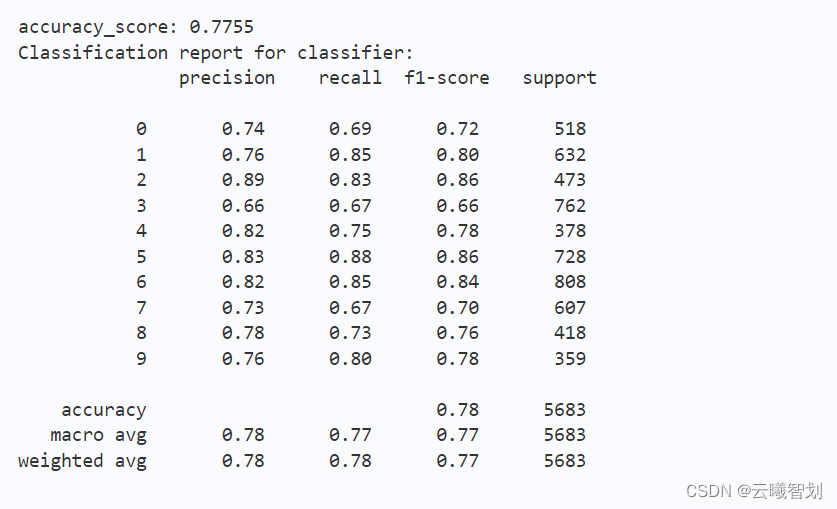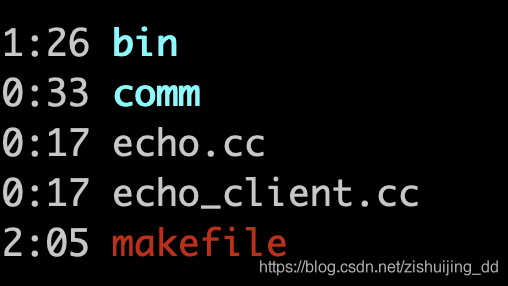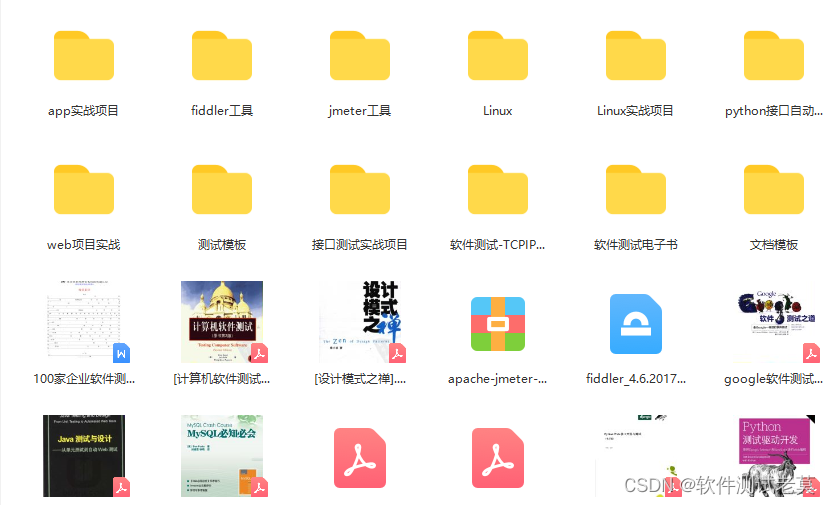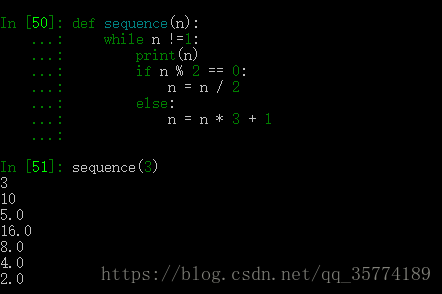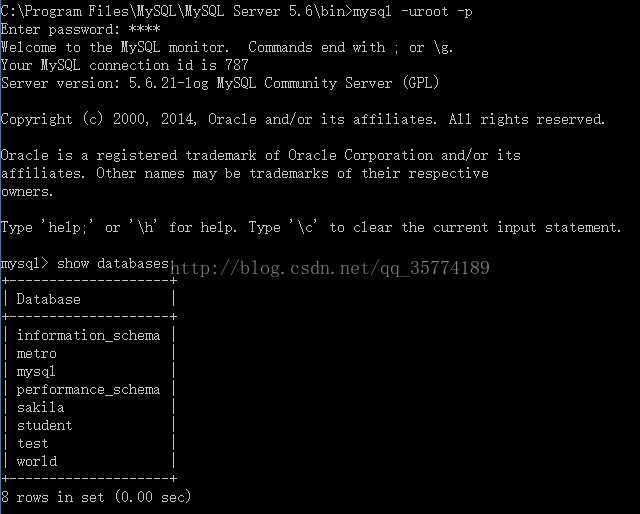当前位置:网站首页>[Machine Learning] Detailed explanation of web crawler combat
[Machine Learning] Detailed explanation of web crawler combat
2022-08-09 09:39:00 【Yunxi Smart Plan】
【机器学习】Detailed explanation of web crawler

活动地址:[CSDN21天学习挑战赛](https://marketing.csdn.net/p/bdabfb52c5d56532133df2adc1a728fd)
作者简介:在校大学生一枚,华为云享专家,阿里云星级博主,腾云先锋(TDP)成员,云曦智划项目总负责人,全国高等学校计算机教学与产业实践资源建设专家委员会(TIPCC)志愿者,以及编程爱好者,期待和大家一起学习,一起进步~
.
博客主页:ぃ灵彧が的学习日志
.
本文专栏:机器学习
.
专栏寄语:若你决定灿烂,山无遮,海无拦
.
文章目录
前言
什么是网络爬虫?
The process of writing programs to automatically obtain data from the network is called data scraping,Also called a web crawler.Web crawler for general step:Get the crawled pageurl,获取页面内容、解析页面、获取所需数据,Repeat the above process until the end of crawling.
一、明星图片爬取
Star images crawl returns based on baidu search results,在百度搜索“中国艺人”,Parsing returns the page display artist image links and maintain.
(一)、Define crawling specificationurl页面的函数
- 导入相关包:
import requests
import json
import os
- 直接使用程序爬取网络数据会被网站识别出来,然后封禁该IP,Interruption of data crawling,所以我们需要首先将程序访问页面伪装成浏览器访问页面
User-Agent:定义一个真实浏览器的代理名称,表明自己的身份(是哪种浏览器),本demo为谷歌浏览器
Accept:告诉WEB服务器自己接受什么介质类型,/ 表示任何类型
Referer:浏览器向WEB服务器表明自己是从哪个网页URL获得点击当前请求中的网址/URL
Connection:表示是否需要持久连接
Accept-Language:浏览器申明自己接收的语言
Accept-Encoding:浏览器申明自己接收的编码方法,通常指定压缩方法,是否支持压缩,支持什么压缩方法(gzip,deflate)
def getPicinfo(url):
headers = {
"User-Agent": "Mozilla/5.0 (Windows NT 6.1; Win64; x64) AppleWebKit/537.36 (KHTML, like Gecko) Chrome/81.0.4044.129 Safari/537.36",
"Accept": "*/*",
"Referer": "https://www.baidu.com/s?ie=utf-8&f=8&rsv_bp=1&rsv_idx=1&tn=baidu&wd=%E4%B8%AD%E5%9B%BD%E8%89%BA%E4%BA%BA&fenlei=256&rsv_pq=cf6f24c500067b9f&rsv_t=c2e724FZlGF9fJYeo9ZV1I0edbhV0Z04aYY%2Fn6U7qaUoH%2B0WbUiKdOr8JO4&rqlang=cn&rsv_dl=ib&rsv_enter=1&rsv_sug3=15&rsv_sug1=6&rsv_sug7=101",
"Host": "sp0.baidu.com",
"Connection": "keep-alive",
"Accept-Language": "en-US,en;q=0.9,zh-CN;q=0.8,zh;q=0.7,zh-TW;q=0.6",
"Accept-Encoding": "gzip, deflate"
}
# 根据url,使用get()方法获取页面内容,返回相应
response = requests.get(url,headers)
# 成功访问了页面
if response.status_code == 200:
return response.text
# 没有成功访问页面,返回None
return None
(二)、爬取图片
The function is defined using the above,进行指定url页面的爬取,Then parse the returned page source code,Get the image link in it,并保存图片:
#图片存放地址
Download_dir='picture'
if os.path.exists(Download_dir)==False:
os.mkdir(Download_dir)
pn_num=1 # 爬取多少页
rn_num=10 # 每页多少个图片
for k in range(pn_num): # for循环,每次爬取一页
url="https://sp0.baidu.com/8aQDcjqpAAV3otqbppnN2DJv/api.php?resource_id=28266&from_mid=1&&format=json&ie=utf-8&oe=utf-8&query=%E4%B8%AD%E5%9B%BD%E8%89%BA%E4%BA%BA&sort_key=&sort_type=1&stat0=&stat1=&stat2=&stat3=&pn="+str(k)+"&rn="+str(rn_num)+"&_=1613785351574"
res = getPicinfo(url) # 调用函数,获取每一页内容
json_str=json.loads(res) # 将获取的文本格式转化为字典格式
figs=json_str['data'][0]['result']
for i in figs: # for循环读取每一张图片的名字
name=i['ename']
img_url=i['pic_4n_78'] # img_url:图片地址
img_res=requests.get(img_url) # 读取图片所在页面内容
if img_res.status_code==200:
ext_str_splits=img_res.headers['Content-Type'].split('/')
ext=ext_str_splits[-1] # 索引-1指向列表倒数第一个元素
fname=name+"."+ext
# 保存图片
open(os.path.join(Download_dir,fname), 'wb' ).write(img_res.content)
print(name,img_url,"saved")
Crawl content sections as shown in figure1-1所示:
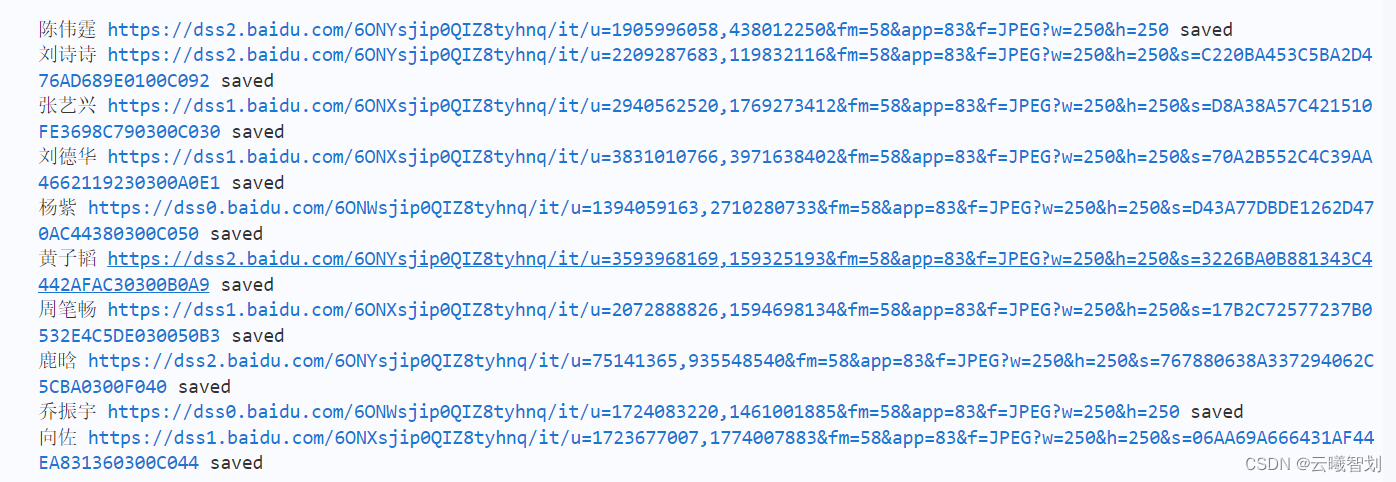
二、股票行情爬取与分析
First crawl a list of stock names,Then get the information of each stock in the list.
(一)、Crawl stock list information
代码如下:
#coding=utf-8
''' Created on 2021年02月20日 @author: zhongshan '''
#http://quote.eastmoney.com/center/gridlist.html
#爬取该页面股票信息
import requests
from fake_useragent import UserAgent
from bs4 import BeautifulSoup
import json
import csv
def getHtml(url):
r = requests.get(url,headers={
'User-Agent': UserAgent().random,
})
r.encoding = r.apparent_encoding
return r.text
#num为爬取多少条记录,可手动设置
num = 20
#该地址为页面实际获取数据的接口地址
stockUrl='http://99.push2.eastmoney.com/api/qt/clist/get?cb=jQuery112408733409809437476_1623137764048&pn=1&pz=20&po=1&np=1&ut=bd1d9ddb04089700cf9c27f6f7426281&fltt=2&invt=2&fid=f3&fs=m:0+t:80&fields=f1,f2,f3,f4,f5,f6,f7,f8,f9,f10,f12,f13,f14,f15,f16,f17,f18,f20,f21,f23,f24,f25,f22,f11,f62,f128,f136,f115,f152&_=1623137764167:formatted'
if __name__ == '__main__':
responseText = getHtml(stockUrl)
jsonText = responseText.split("(")[1].split(")")[0];
resJson = json.loads(jsonText)
datas = resJson["data"]["diff"]
datalist = []
for data in datas:
# if (str().startswith('6') or str(data["f12"]).startswith('3') or str(data["f12"]).startswith('0')):
row = [data["f12"],data["f14"]]
datalist.append(row)
print(datalist)
f =open('stock.csv','w+',encoding='utf-8',newline="")
writer = csv.writer(f)
writer.writerow(('代码', '名称'))
for data in datalist:
writer.writerow((data[0]+"\t",data[1]+"\t"))
f.close()
输出结果如图2-1所示:

(二)、股票数据获取
After get the stock code and name list,Download stock data one by one,根据观察,The historical data for each stock consists of four parts:头url,上市地(深市,沪市)、股票代码、尾url,Just combine the aboveurl,即可获得csv格式的数据,并下载,如下:
import csv
import urllib.request as r
import threading
#读取之前获取的个股csv丢入到一个列表中
def getStockList():
stockList = []
f = open('stock.csv','r',encoding='utf-8')
f.seek(0)
reader = csv.reader(f)
for item in reader:
stockList.append(item)
f.close()
return stockList
def downloadFile(url,filepath):
# print(filepath)
try:
r.urlretrieve(url,filepath)
except Exception as e:
print(e)
print(filepath,"is downloaded")
pass
#设置信号量,控制线程并发数
sem = threading.Semaphore(1)
def downloadFileSem(url,filepath):
with sem:
downloadFile(url,filepath)
urlStart = 'http://quotes.money.163.com/service/chddata.html?code='
urlEnd = '&end=20210221&fields=TCLOSE;HIGH;LOW;TOPEN;LCLOSE;CHG;PCHG;VOTURNOVER;VATURNOVER'
if __name__ == '__main__':
stockList = getStockList()
stockList.pop(0)
print(stockList)
for s in stockList:
scode = str(s[0].split("\t")[0])
#0:沪市;1:深市
url = urlStart + ("0" if scode.startswith('6') else "1") + scode + urlEnd
print(url)
filepath = (str(s[1].split("\t")[0])+"_"+scode) + ".csv"
threading.Thread(target=downloadFileSem,args=(url,filepath)).start()
The download file parts list as shown in figure2-2所示:
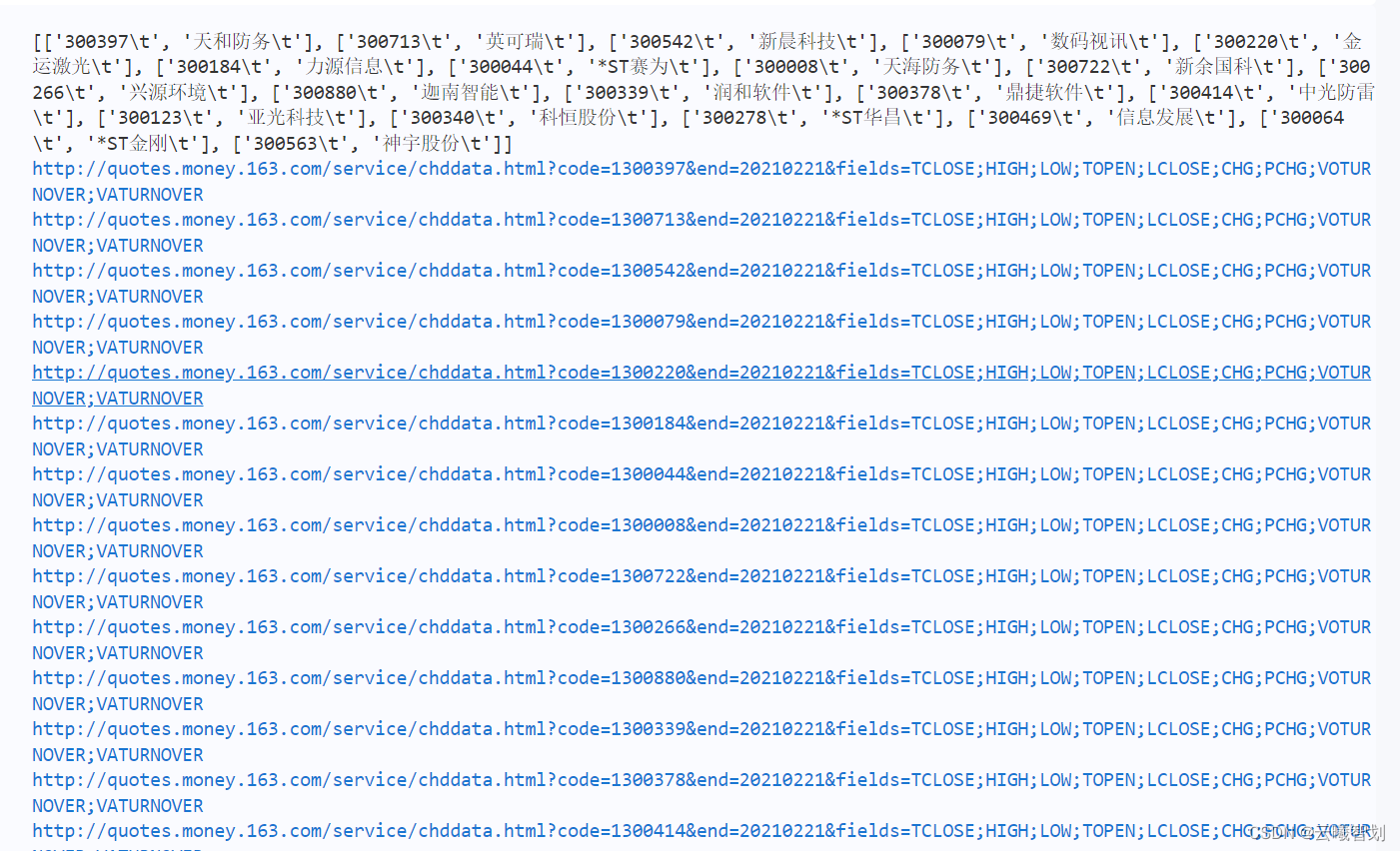
(三)、股票数据分析
现在,Let's do some simple analysis on stock data,such as the highest price of a stock、Lowest price change over time,股票的涨跌幅/Change in amount over time,And the volume of the day and the day before the price have to do, and so on.
This analysis can be used to drawing manner visual display.
- Define the function function for loading data:
import pandas as pd
import matplotlib.pyplot as plt
import csv
# 设置显示中文
plt.rcParams['font.sans-serif'] = ['simhei'] # 指定默认字体
plt.rcParams['axes.unicode_minus']=False # 用来显示负号
plt.rcParams['figure.dpi'] = 100 # 每英寸点数
files = []
# ['日期' '股票代码' '名称' '收盘价' '最高价' '最低价' '开盘价' '前收盘' '涨跌额' '涨跌幅' '成交量' '成交金额']
def read_file(file_name):
data = pd.read_csv(file_name,encoding='gbk')
col_name = data.columns.values
return data, col_name
def get_files_path():
stock_list=getStockList()
paths = []
for stock in stock_list[1:]:
p = stock[1].strip()+"_"+stock[0].strip()+".csv"
print(p)
data,_ = read_file(p)
if len(data)>1:
files.append(p)
print(p)
get_files_path()
print(files)
- 定义get_diff(file_name)函数,the rise and fall of the stock/Image of the change over time,The volatility of the stock can be observed for a period of time.
# 获取股票的涨跌额及涨跌幅度变化曲线
# ['日期' '股票代码' '名称' '收盘价' '最高价' '最低价' '开盘价' '前收盘' '涨跌额' '涨跌幅' '成交量' '成交金额']
def get_diff(file_name):
data, col_name = read_file(file_name)
index = len(data['日期'])-1
sep = index//15
plt.figure(figsize=(15,17))
x = data['日期'].values.tolist()
x.reverse()
# x = x[-index:]
xticks=list(range(0,len(x),sep))
xlabels=[x[i] for i in xticks]
xticks.append(len(x))
# xlabels.append(x[-1])
y1 = [float(c) if c!='None' else 0 for c in data['涨跌额'].values.tolist()]
y2=[float(c) if c!='None' else 0 for c in data['涨跌幅'].values.tolist()]
y1.reverse()
y2.reverse()
# y1 = y1[-index:]
# y2 = y2[-index:]
ax1 = plt.subplot(211)
plt.plot(range(1,len(x)+1),y1,c='r')
plt.title('{}-涨跌额/涨跌幅'.format(file_name.split('_')[0]),fontsize=20)
ax1.set_xticks(xticks)
ax1.set_xticklabels(xlabels, rotation=40)
# plt.xlabel('日期')
plt.ylabel('涨跌额',fontsize=20)
ax2 = plt.subplot(212)
plt.plot(range(1,len(x)+1),y2,c='g')
# plt.title('{}-涨跌幅'.format(file_name.split('_')[0]))
ax2.set_xticks(xticks)
ax2.set_xticklabels(xlabels, rotation=40)
plt.xlabel('日期',fontsize=20)
plt.ylabel('涨跌幅',fontsize=20)
plt.savefig('work/'+file_name.split('.')[0]+'_diff.png')
plt.show()
- 定义get_max_min(file_name)函数,Make the daily high for the stock/Lowest price over time image,You can also observe the volatility of the stock or whether it appreciates for a period of time.
def get_max_min(file_name):
data, col_name = read_file(file_name)
index = len(data['日期'])-1
sep = index//15
plt.figure(figsize=(15,10))
x = data['日期'].values.tolist()
x.reverse()
x = x[-index:]
xticks=list(range(0,len(x),sep))
xlabels=[x[i] for i in xticks]
xticks.append(len(x))
# xlabels.append(x[-1])
y1 = [float(c) if c!='None' else 0 for c in data['最高价'].values.tolist()]
y2=[float(c) if c!='None' else 0 for c in data['最低价'].values.tolist()]
y1.reverse()
y2.reverse()
y1 = y1[-index:]
y2 = y2[-index:]
ax = plt.subplot(111)
plt.plot(range(1,len(x)+1),y1,c='r',linestyle="-")
plt.plot(range(1,len(x)+1),y2,c='g',linestyle="--")
plt.title('{}-最高价/最低价'.format(file_name.split('_')[0]),fontsize=20)
ax.set_xticks(xticks)
ax.set_xticklabels(xlabels, rotation=40)
plt.xlabel('日期',fontsize=20)
plt.ylabel('价格',fontsize=20)
plt.legend(['最高价','最低价'],fontsize=20)
plt.savefig('work/'+file_name.split('.')[0]+'_minmax.png')
plt.show()
- 定义get_deal(file_name)函数,the daily trading volume of the stock/Image of transaction amount over time,You can observe the changes in the trading volume of the stock over a period of time,And if there is a big deal:
def get_deal(file_name):
data, col_name = read_file(file_name)
index = len(data['日期'])-1
sep = index//15
plt.figure(figsize=(15,10))
x = data['日期'].values.tolist()
x.reverse()
x = x[-index:]
xticks=list(range(0,len(x),sep))
xlabels=[x[i] for i in xticks]
xticks.append(len(x))
# xlabels.append(x[-1])
y1 = [float(c) if c!='None' else 0 for c in data['成交量'].values.tolist()]
y2=[float(c) if c!='None' else 0 for c in data['成交金额'].values.tolist()]
y1.reverse()
y2.reverse()
y1 = y1[-index:]
y2 = y2[-index:]
ax = plt.subplot(111)
plt.plot(range(1,len(x)+1),y1,c='b',linestyle="-")
plt.plot(range(1,len(x)+1),y2,c='r',linestyle="--")
plt.title('{}-成交量/成交金额'.format(file_name.split('_')[0]),fontsize=20)
ax.set_xticks(xticks)
ax.set_xticklabels(xlabels, rotation=40)
plt.xlabel('日期',fontsize=20)
# plt.ylabel('')
plt.legend(['成交量','成交金额'],fontsize=20)
plt.savefig('work/'+file_name.split('.')[0]+'_deal.png')
plt.show()
- 定义get_rel(flie_name)函数,Do the relationship between the stock's trading volume and the previous day's rise and fall,Show visually or frontal impact on trading volume.
def get_rel(file_name):
data, col_name = read_file(file_name)
index = len(data['日期'])-1
sep = index//15
plt.figure(figsize=(15,10))
x = data['日期'].values.tolist()
x.reverse()
x = x[-index:]
xticks=list(range(0,len(x),sep))
xlabels=[x[i] for i in xticks]
xticks.append(len(x))
# xlabels.append(x[-1])
y1 = [float(c) if c!='None' else 0 for c in data['成交量'].values.tolist()]
y2=[float(c) if c!='None' else 0 for c in data['涨跌幅'].values.tolist()]
y1.reverse()
y2.reverse()
y1 = y1[-index:]
y2 = y2[-index:]
y2 = [0] + y2[:-1]
ax = plt.subplot(111)
plt.scatter(y2,y1)
plt.title('{}-成交量与前一天涨跌幅的关系'.format(file_name.split('_')[0]),fontsize=20)
# ax.set_xticks(xticks)
# ax.set_xticklabels(xlabels, rotation=40)
plt.xlabel('前一天涨跌幅',fontsize=20)
plt.ylabel('成交量',fontsize=20)
# plt.legend(['成交量','成交金额'],fontsize=20)
plt.savefig('work/'+file_name.split('.')[0]+'_rel.png')
plt.show()
# for file in files:
# get_diff(file)
# for file in files:
# get_max_min(file)
print(len(files))
- Call this analysis function,Draw a relevant display graph for each stock:
for file in files:
get_max_min(file)
get_deal(file)
get_diff(file)
get_rel(file)
The rise and fall of the stock and the change of the rise and fall are as follows:2-3、2-4所示:
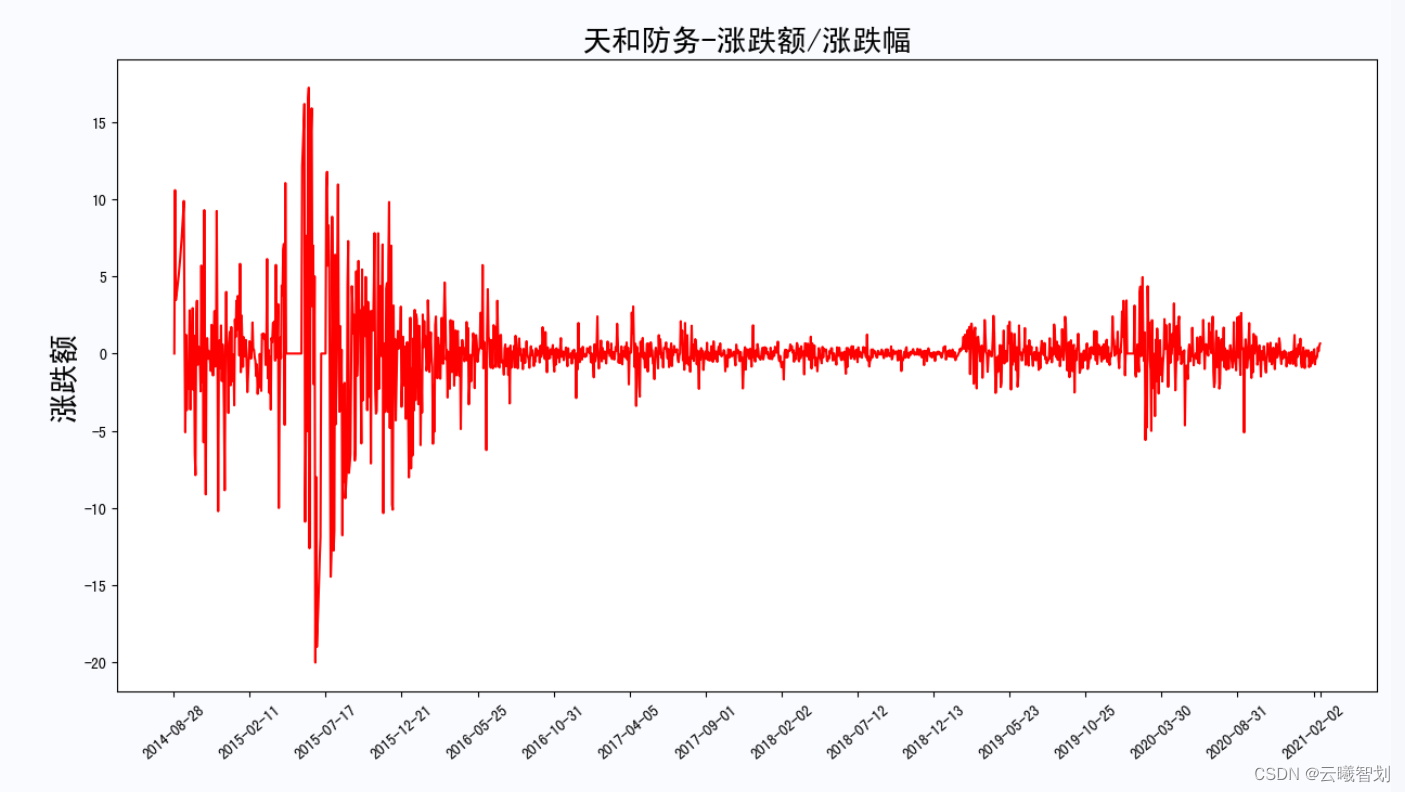
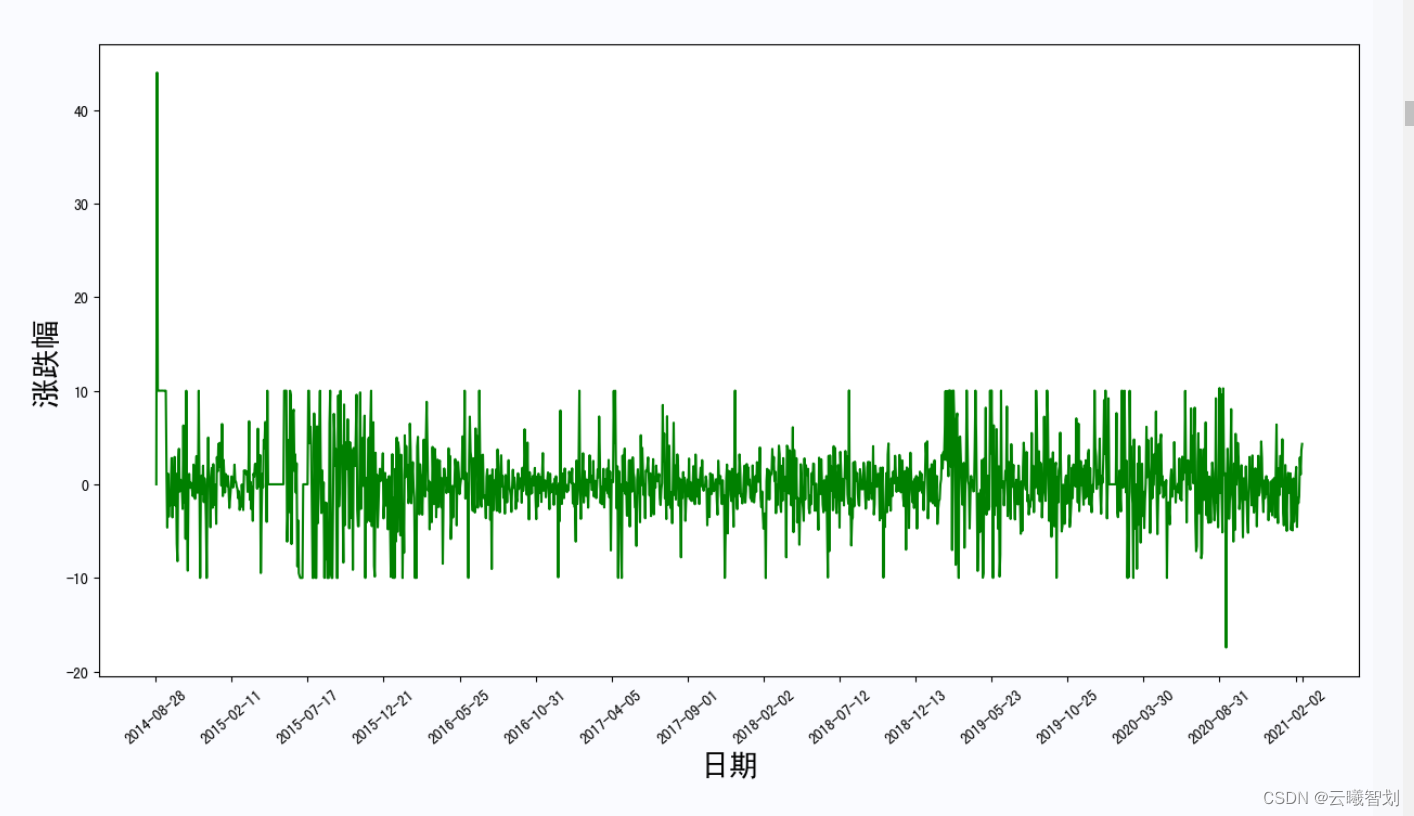
Highest price of a stock/The lowest price changes as shown in figure2-5所示:
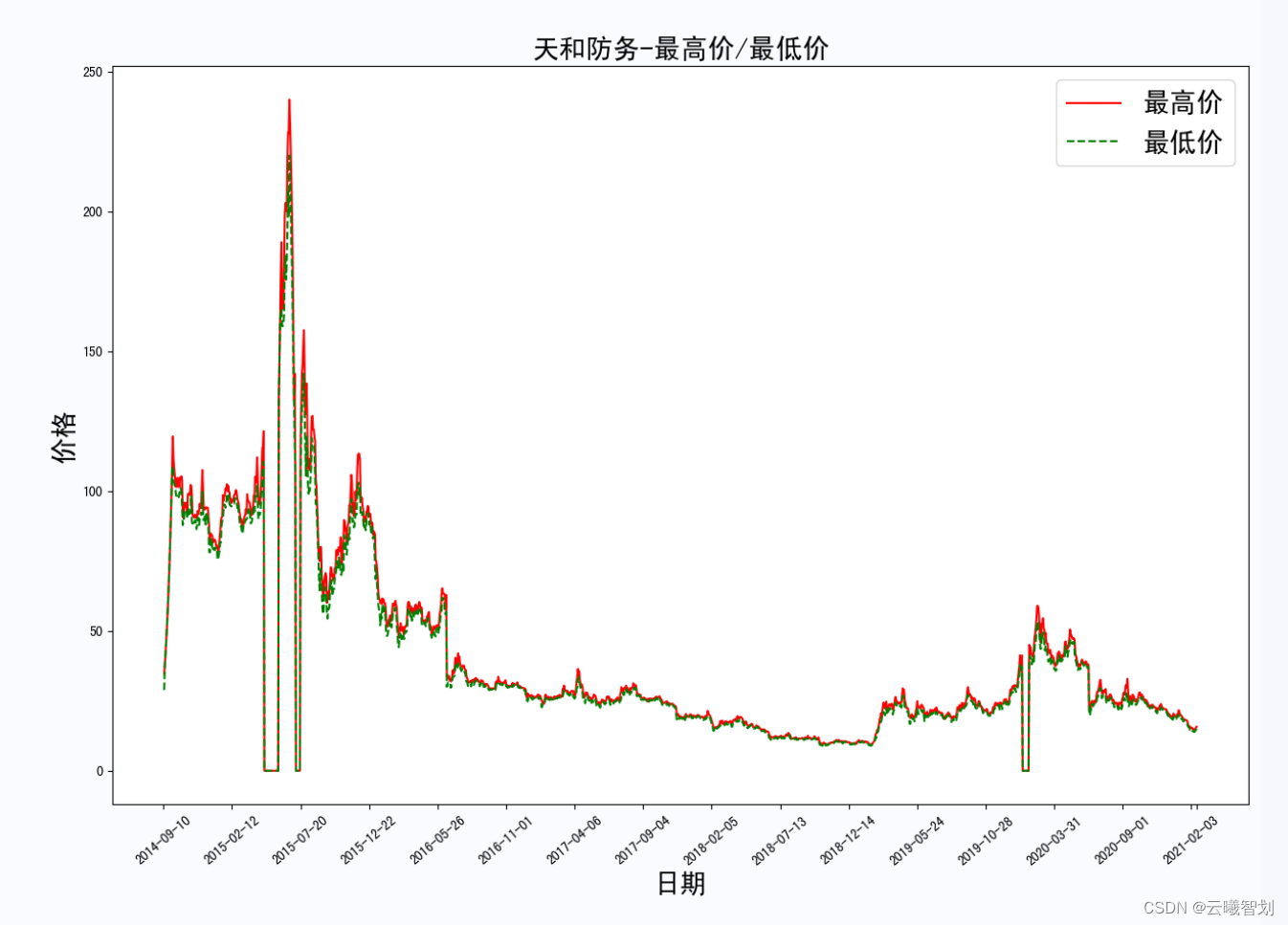
股票成交量/The change in transaction amount is shown in the figure2-6所示:
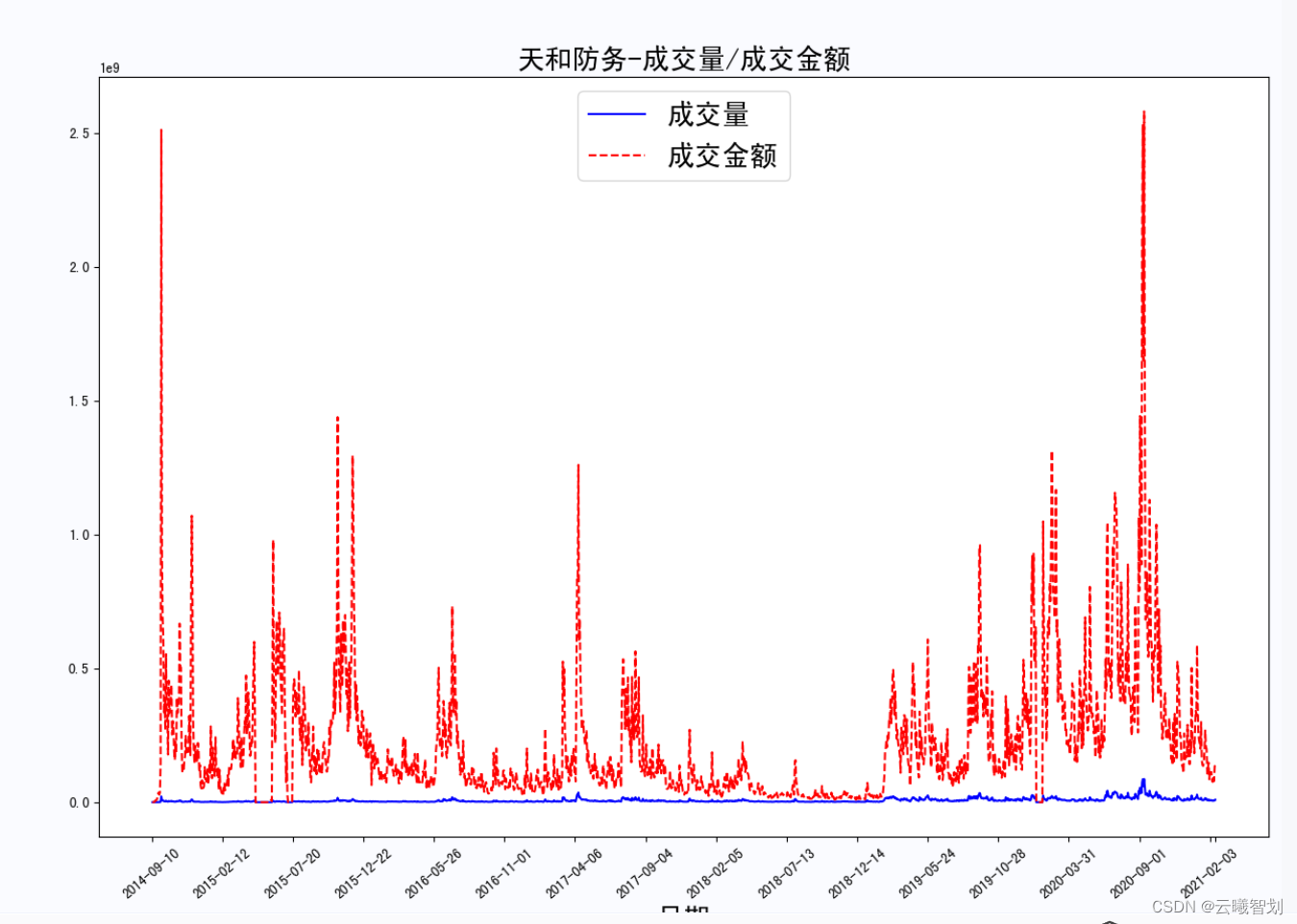
The relationship between the rise and fall of the stock and the trading volume of the next day is as follows2-7所示:
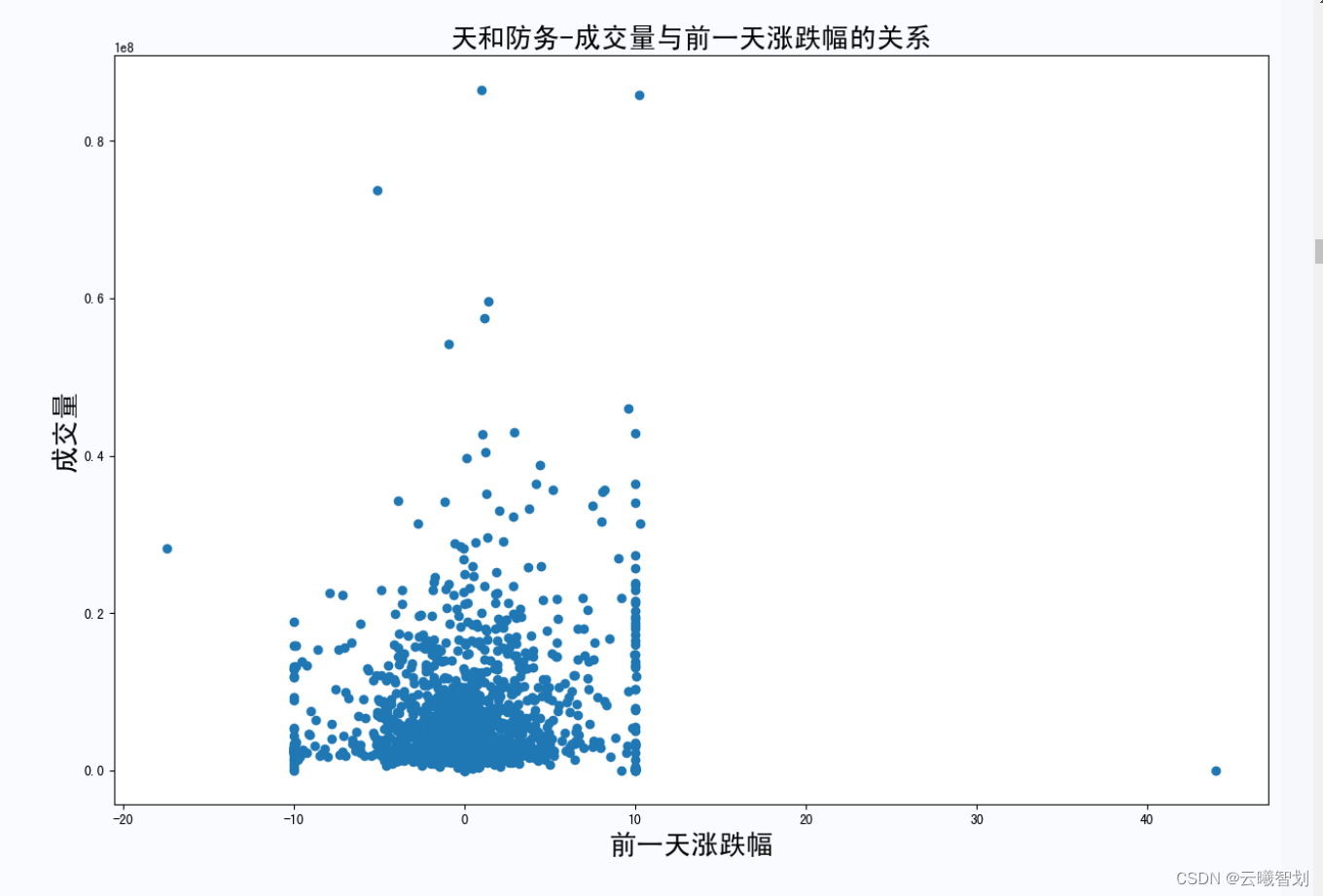
三、科比职业生涯数据爬取与分析
This experiment starts from the URLhttp://www.stat-nba.comGet data about Kobe,主要包括:常规赛、季后赛、The data of the three events of the All-Star Game.
(一)、Kobe Bryant's career match data crawling
- 导入相关包
import requests
from bs4 import BeautifulSoup
import csv
import matplotlib.pyplot as plt
import pandas as pd
- 获取url页面内容,and returns in text format
def getKobeList(code):
url = "http://www.stat-nba.com/player/stat_box/195_"+code+".html"
response = requests.get(url)
resKobe = response.text
return resKobe
- 获取Kobe历史数据
#获取kobe历史数据
def getRow(resKobe,code):
soup = BeautifulSoup(resKobe,"html.parser")
table = soup.find_all(id='stat_box_avg')
#表头
header = []
if code == "season":
header = ["赛季","出场","首发","时间","投篮","命中","出手","三分","命中","出手","罚球","命中","出手","篮板","前场","后场","助攻","抢断","盖帽","失误","犯规","得分","胜","负"]
if code == "playoff":
header = ["赛季","出场","时间","投篮","命中","出手","三分","命中","出手","罚球","命中","出手","篮板","前场","后场","助攻","抢断","盖帽","失误","犯规","得分","胜","负"]
if code == "allstar":
header = ["赛季","首发","时间","投篮","命中","出手","三分","命中","出手","罚球","命中","出手","篮板","前场","后场","助攻","抢断","盖帽","失误","犯规","得分"]
#数据
rows = [];
rows.append(header)
for tr in table[0].find_all("tr",class_="sort"):
row = []
for td in tr.find_all("td"):
rank = td.get("rank")
if rank != "LAL" and rank != None:
row.append(td.get_text())
rows.append(row)
return rows
#写入csv文件,rows为数据,dir为写入文件路径
def writeCsv(rows,dir):
with open(dir, 'w', encoding='utf-8-sig', newline='') as f:
writer = csv.writer(f)
writer.writerows(rows)
#常规赛数据
resKobe = getKobeList("season")
rows = getRow(resKobe,"season")
#print(rows)
writeCsv(rows,"season.csv")
print("season.csv saved")
#季后赛数据
resKobe = getKobeList("playoff")
rows = getRow(resKobe,"playoff")
#print(rows)
writeCsv(rows,"playoff.csv")
print("playoff.csv saved")
#全明星数据
resKobe = getKobeList("allstar")
rows = getRow(resKobe,"allstar")
#print(rows)
writeCsv(rows,"star.csv")
print("star.csv saved")
(二)、Kobe's career stats
For different events and at different times,Mapping Kobe's career scoring,比如,Mapping Kobe's rebounds by season、助攻、Score distribution,To a certain extent, it can reflect the degree of its contribution in each season.First define the display functionshow_score(),Pass in the name of a different event,item to display,and drawing line styles, etc.:
# 篮板、助攻、得分
def show_score(game_name='season', item='篮板', plot_name='line'):
# game_name: season, playoff, star
# item: 篮板,助攻,得分
# plot_name: line,bar
file_name = game_name+'.csv'
data = pd.read_csv(file_name)
X= data['赛季'].values.tolist()
X.reverse()
if item=='all':
Y1 = data['篮板'].values.tolist()
Y2 = data['助攻'].values.tolist()
Y3 = data['得分'].values.tolist()
Y1.reverse()
Y2.reverse()
Y3.reverse()
else:
Y = data[item].values.tolist()
Y.reverse()
if plot_name=='line':
if item=='all':
plt.plot(X,Y1,c='r',linestyle="-.")
plt.plot(X,Y2,c='g',linestyle="--")
plt.plot(X,Y3,c='b',linestyle="-")
legend=['篮板','助攻','得分']
else:
plt.plot(X,Y,c='g',linestyle="-")
legend=[item]
elif plot_name=='bar':
#facecolor:表面的颜色;edgecolor:边框的颜色
if item=='all':
fig = plt.figure(figsize=(15,5))
ax1 = plt.subplot(131)
plt.bar(X,Y1,facecolor = '#9999ff',edgecolor = 'white')
plt.legend(['篮板'])
plt.title('Kobe职业生涯数据分析:'+game_name)
plt.xticks(rotation=60)
plt.ylabel('篮板')
ax2 = plt.subplot(132)
plt.bar(X,Y2,facecolor = '#999900',edgecolor = 'white')
plt.legend(['助攻'])
plt.title('Kobe职业生涯数据分析:'+game_name)
plt.xticks(rotation=60)
plt.ylabel('助攻')
ax3 = plt.subplot(133)
plt.bar(X,Y3,facecolor = '#9988ff',edgecolor = 'white')
legend=['得分']
else:
plt.bar(X,Y,facecolor = '#9900ff',edgecolor = 'white')
legend=[item]
else:
return
plt.legend(legend)
plt.title('Kobe职业生涯数据分析:'+game_name)
plt.xticks(rotation=60)
plt.xlabel('赛季')
if item!='all':
plt.ylabel(item)
else:
plt.ylabel('得分')
plt.savefig('work/Kobe职业生涯数据分析_{}_{}.png'.format(game_name,item))
plt.show()
# 篮板、助攻、得分
game_name = 'season'
for game_name in ['season','playoff','star']:
show_score(game_name=game_name, item='篮板', plot_name='bar')
show_score(game_name=game_name, item='助攻', plot_name='bar')
show_score(game_name=game_name, item='得分', plot_name='bar')
show_score(game_name=game_name, item='篮板', plot_name='line')
show_score(game_name=game_name, item='助攻', plot_name='line')
show_score(game_name=game_name, item='得分', plot_name='line')
show_score(game_name=game_name, item='all', plot_name='bar')
show_score(game_name=game_name, item='all', plot_name='line')
According to the plotting function defined above,绘制KobeRelevant data in various competitions,如下图3-1、3-2、3-3所示:
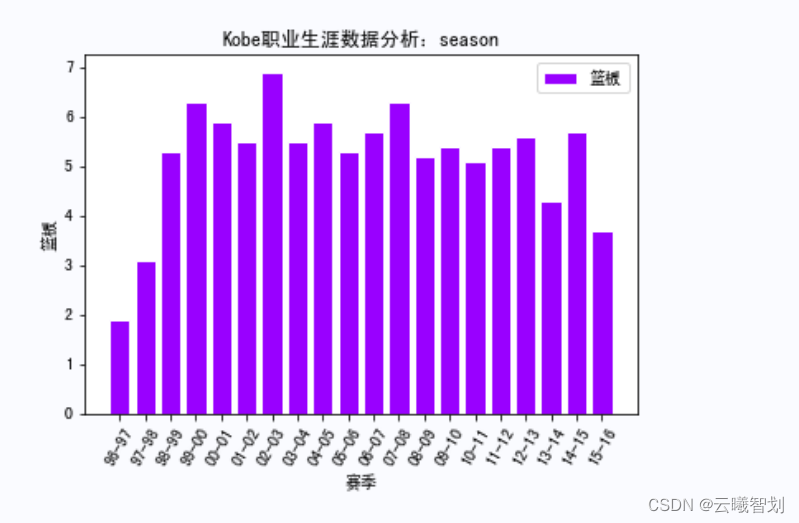
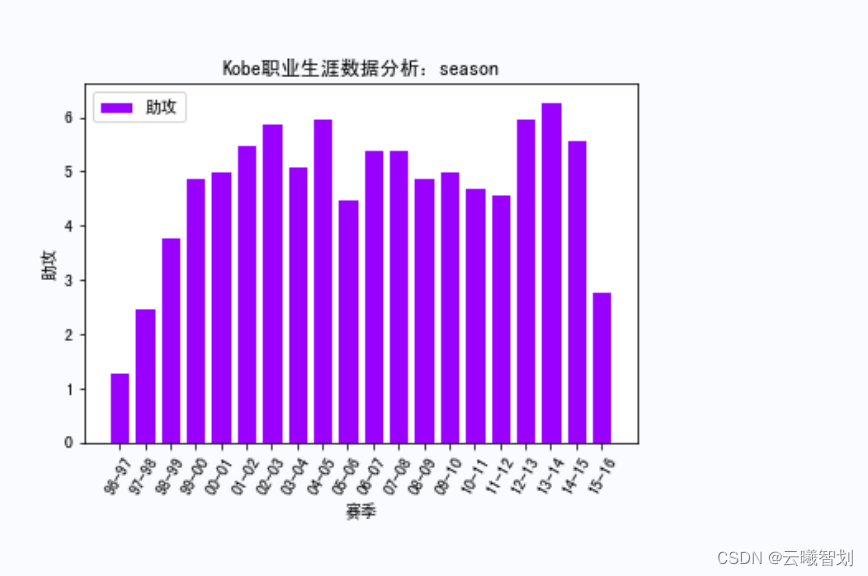
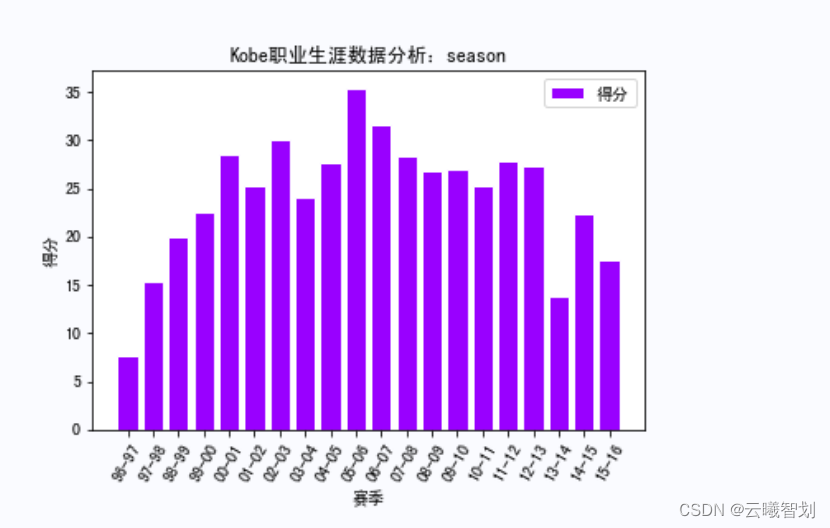
The output part of the result is shown in the figure3-4至3-8所示:
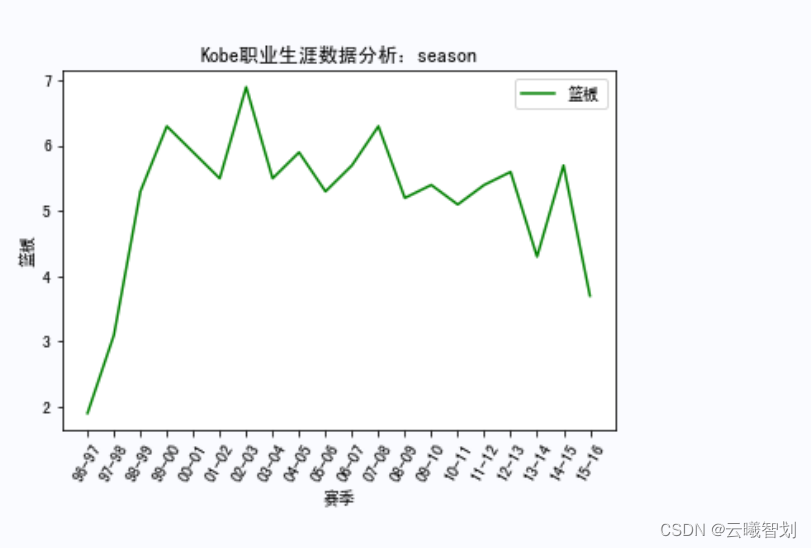
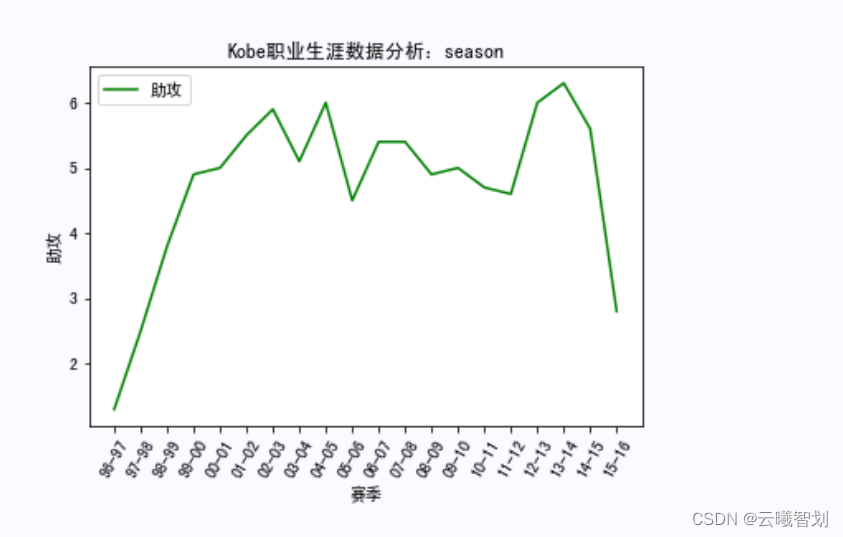
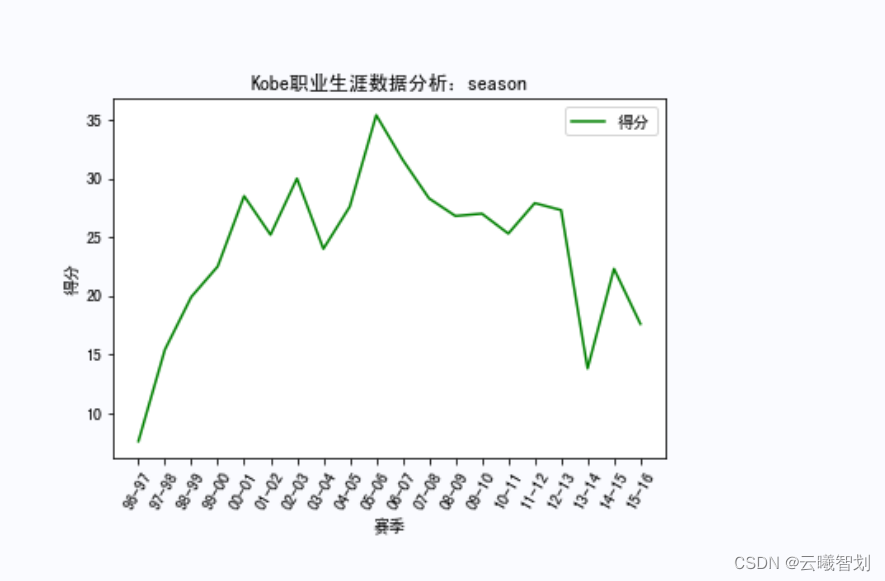
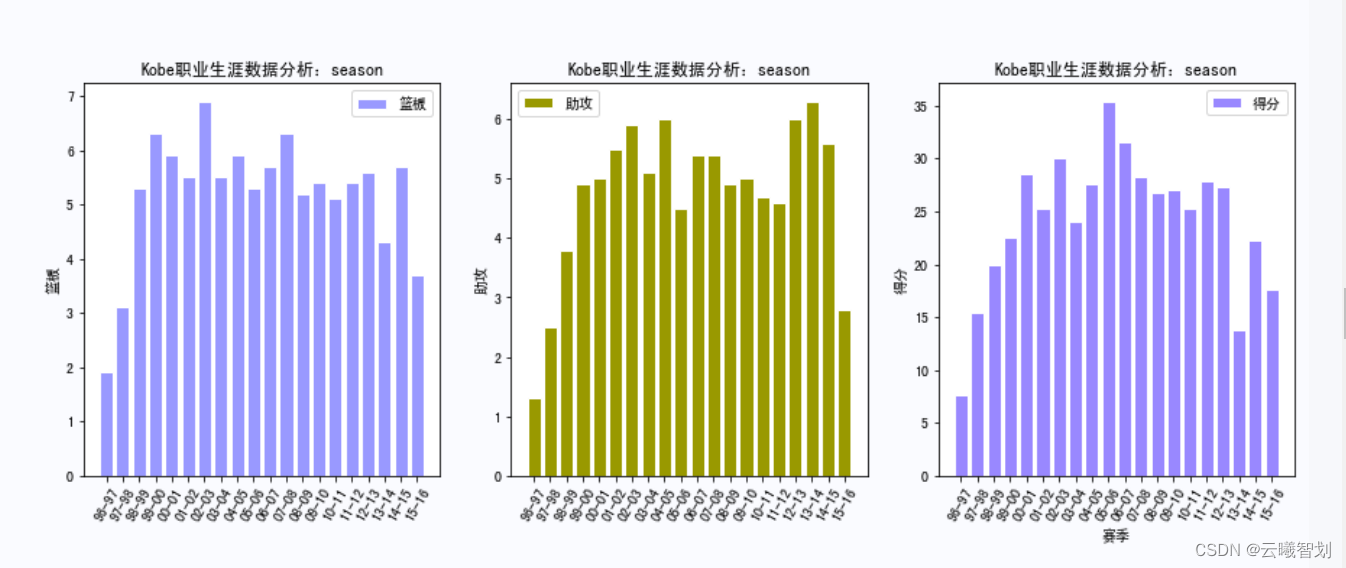
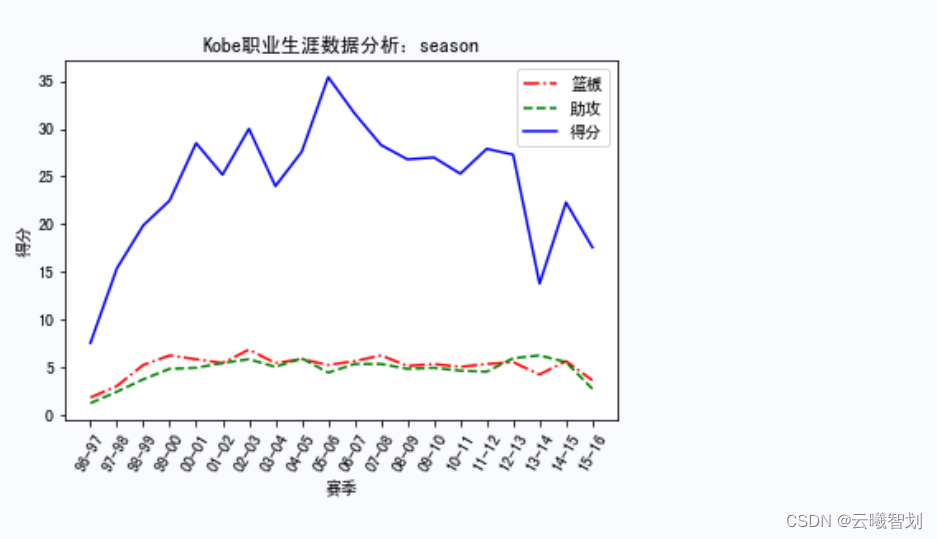
总结
本系列文章内容为根据清华社初版的《机器学习实践》所作的相关笔记和感悟,其中代码均为基于百度飞浆开发,若有任何侵权和不妥之处,请私信于我,定积极配合处理,看到必回!!!
最后,引用本次活动的一句话,来作为文章的结语~( ̄▽ ̄~)~:
【学习的最大理由是想摆脱平庸,早一天就多一份人生的精彩;迟一天就多一天平庸的困扰.】

边栏推荐
猜你喜欢
随机推荐
软件测试面试中,面试官问你一些比较“刁难”的问题你会怎么回答
Golang Protobuf 处理
Ontology Development Diary 03 - When debugging is in progress
Thread,Runnable,ExecutorService线程池控制下线程量
IDEA见过就会爱上的超实用快捷键,一键十行!
5. Transform Streams
常用命令之思科常用基础配置
8. Recursively traverse and delete cases
2. Thread creation
Arrays类、冒泡排序、选择排序、插入排序、稀疏数组!
软件测试面试思路技巧和方法分享,学到就是赚到
Go-接口的那些事
选择黑盒测试用例设计方法的综合策略方案总结
mysql 修改密码和忘记密码操作
【个人学习总结】CRC校验原理及实现
web测试之功能测试常用的方法有哪几种?有什么要点要注意?
mac 上安装Redis和配置
LeetCode179:最大数(C语言)代码简洁!
makefile学习-解决目标文件输出路径问题
自动化测试简历编写应该注意哪方面?有哪些技巧?

